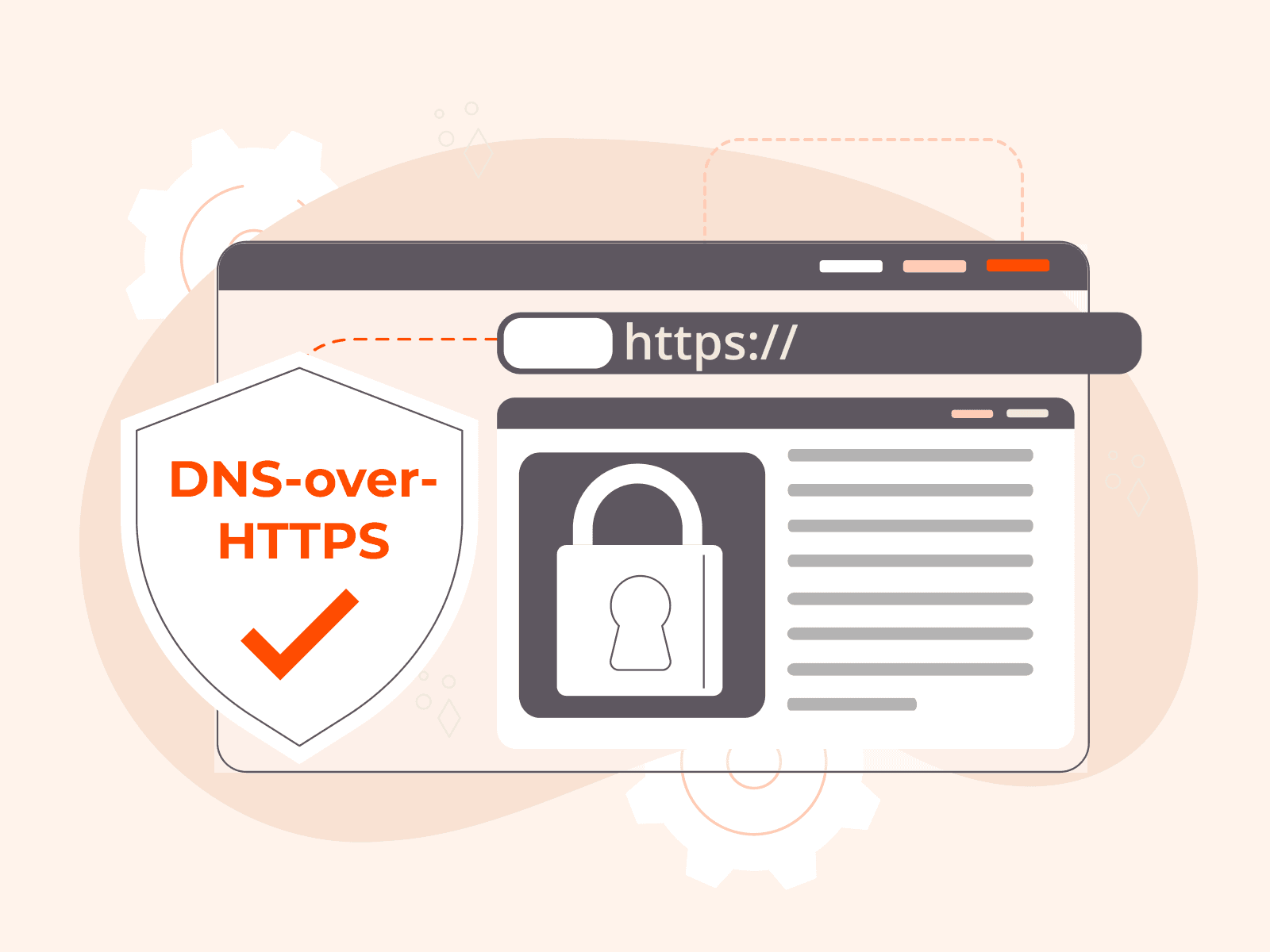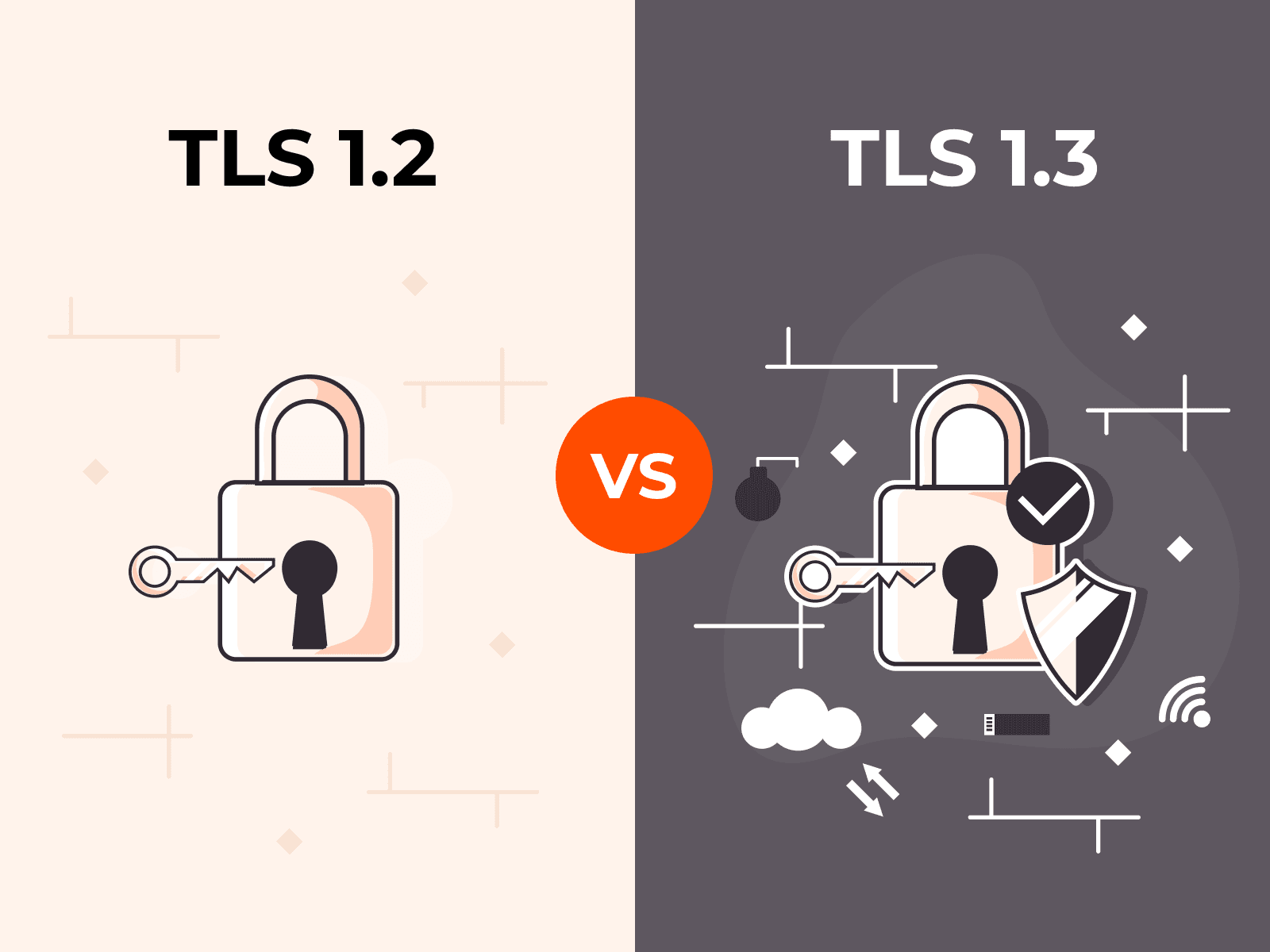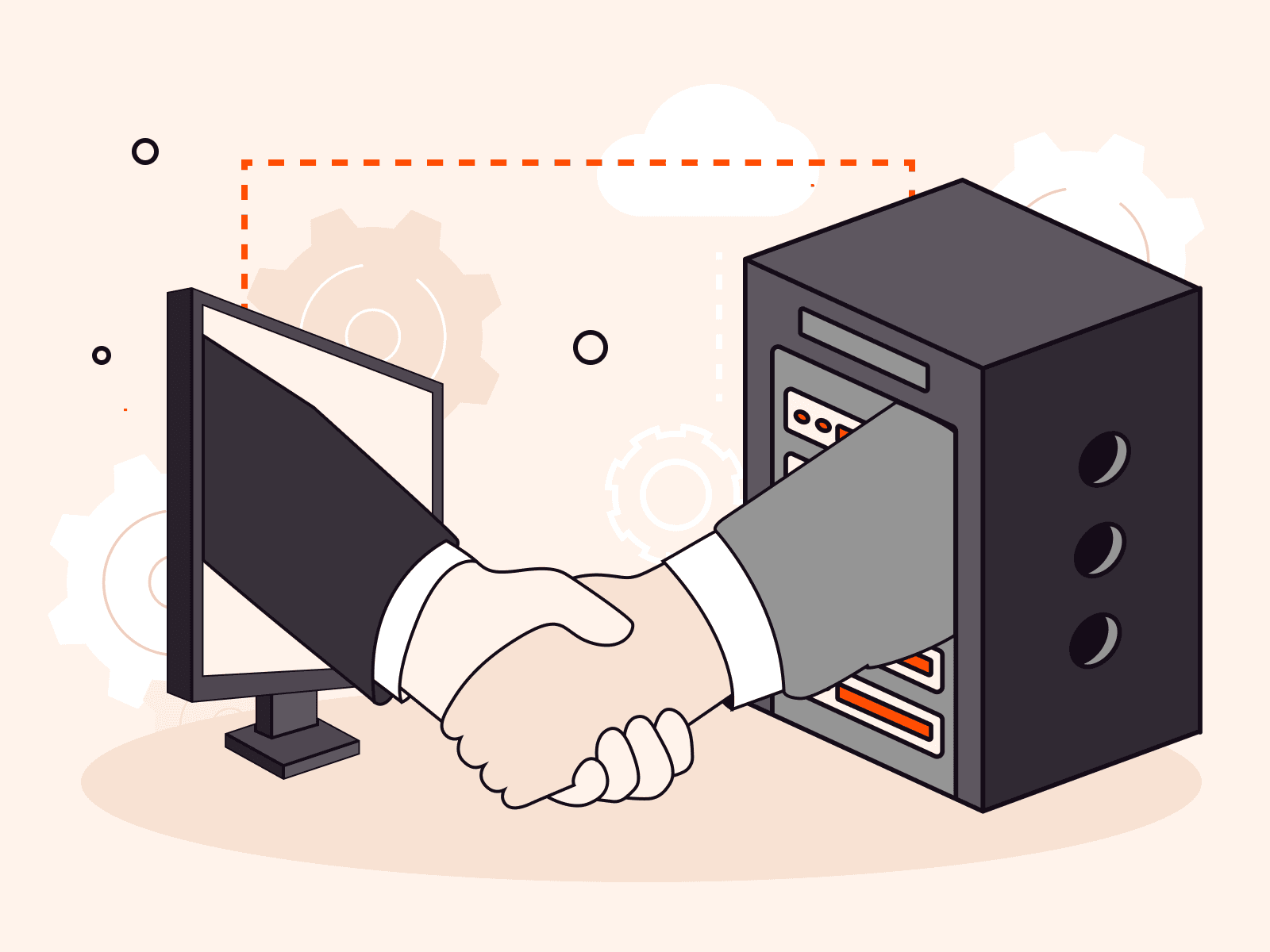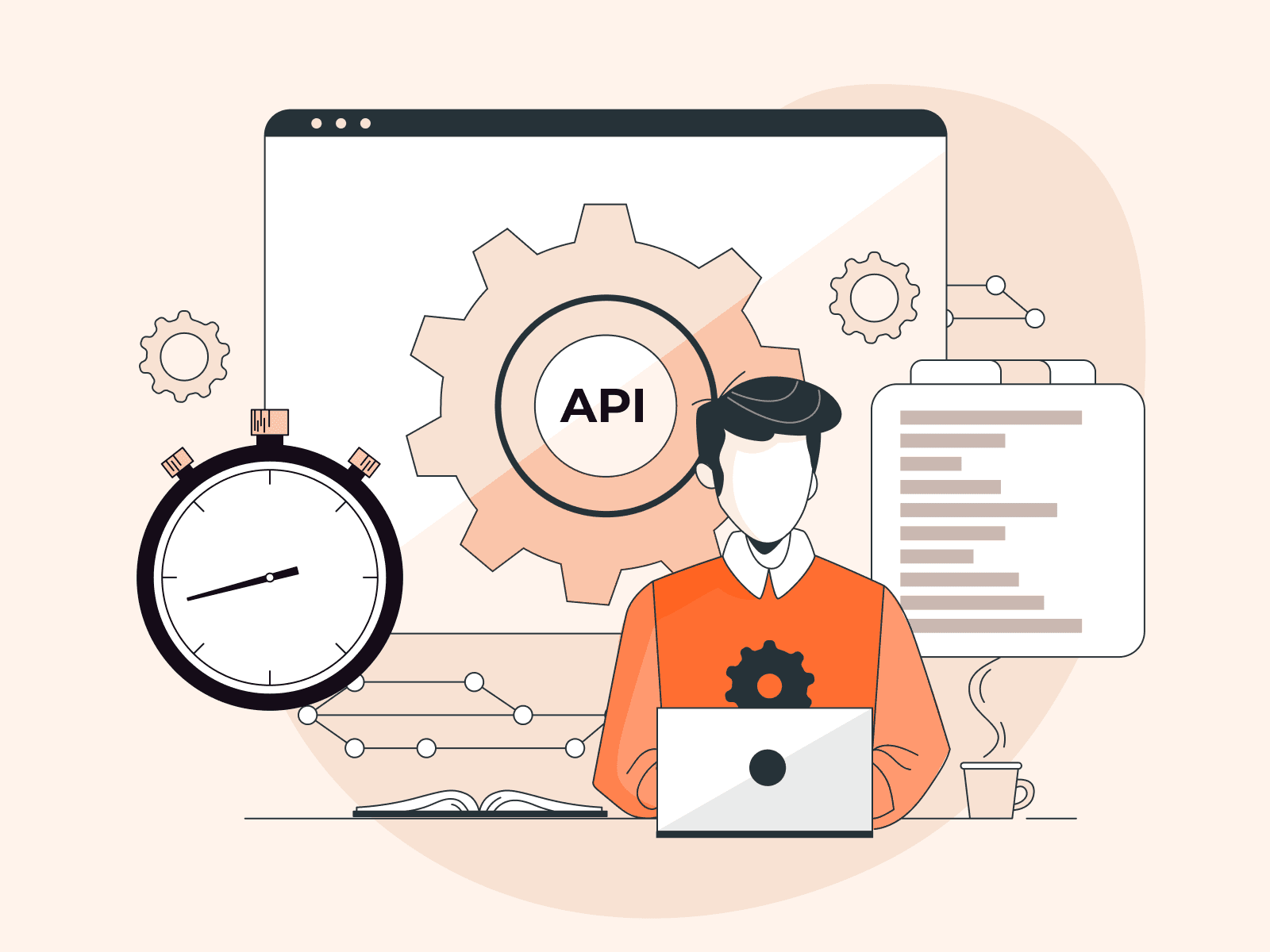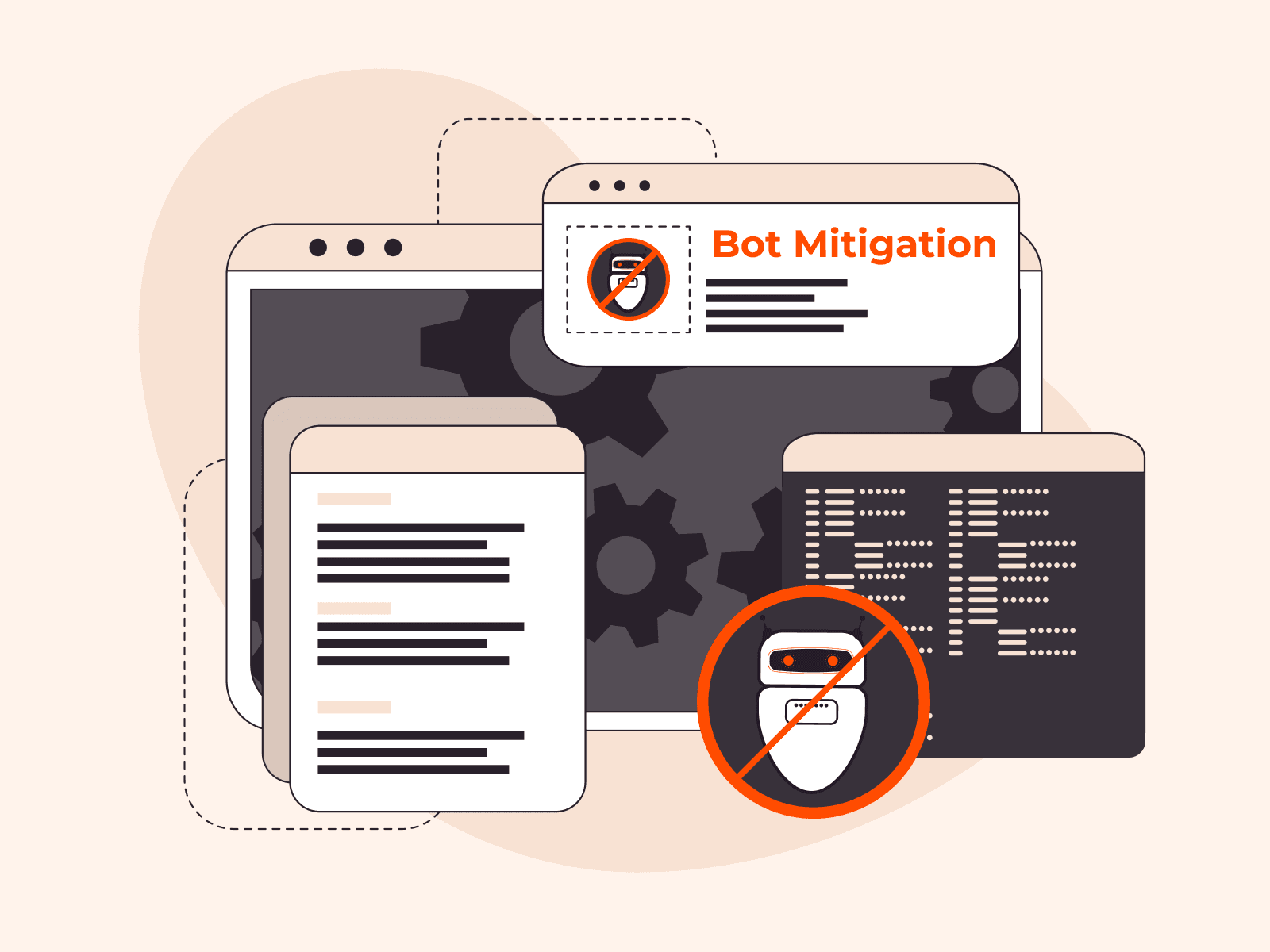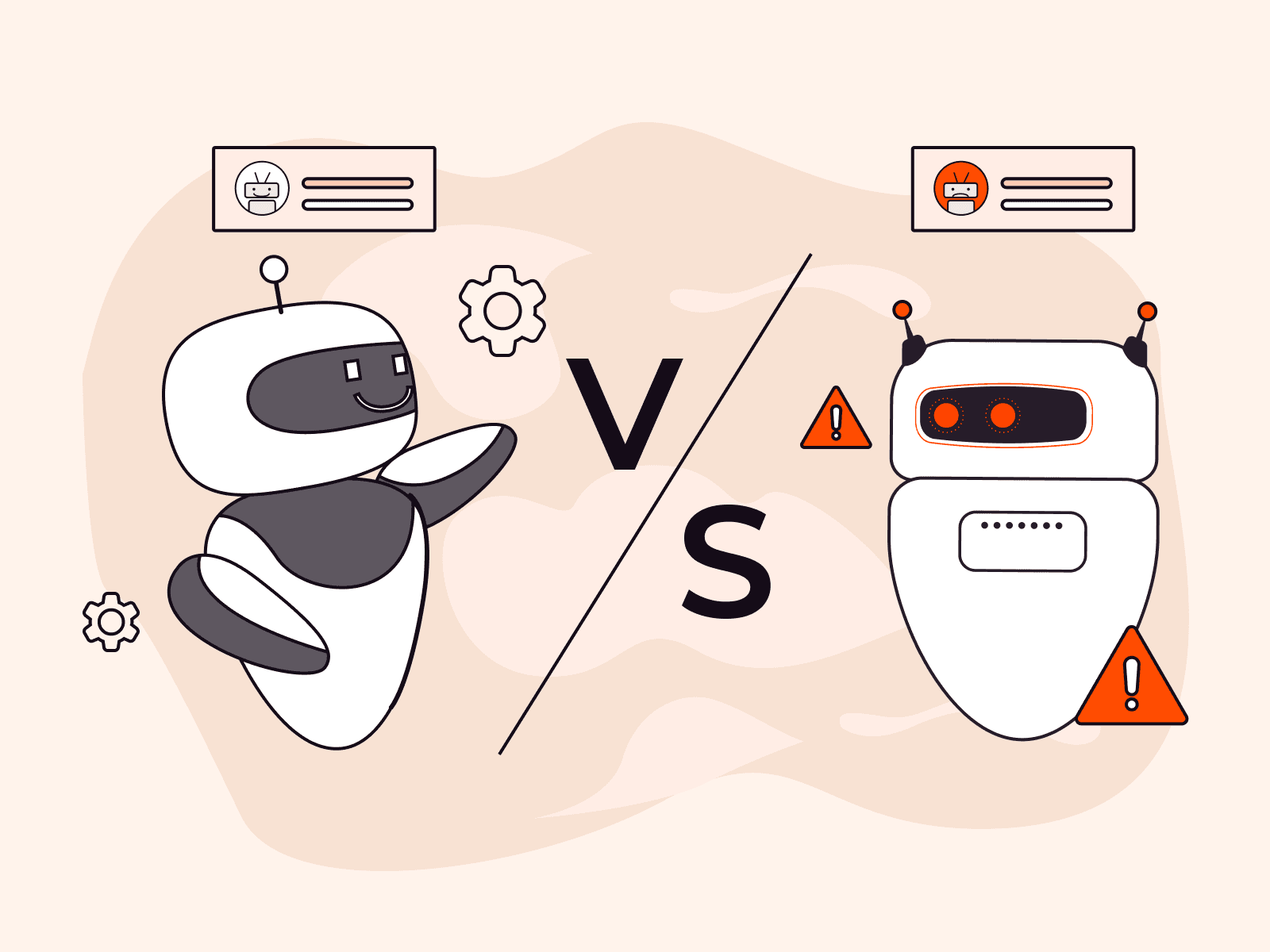In an era when a single data breach can cripple a company overnight, SOC 2 (pronounced “sock two”) isn’t just an advanced security measure—it can set your company apart by demonstrating your commitment to this security gold standard. SOC 2 not only shields your customer data from lurking threats, but can even help to pull in high-value deals in a competitive market by assuring customers that you manage and protect customer data with exceptional care. This article will explain everything you need to know about SOC 2 compliance, including its definition, significance, and the process to obtain SOC 2 certification, helping you to empower your organization’s growth strategy.
What Is SOC 2 Compliance?
SOC 2, also known as System and Organization Controls 2, is an auditing standard that evaluates the internal security controls of service organizations, especially those that handle customer data in cloud environments, such as healthcare and finance. It is a voluntary measure that serves as proof that the certificate holder adheres to the highest online security standards relevant to their industry and operations, and was developed with technology companies in mind.
Clients today, cognizant of the critical nature of their data, demand the highest standards of security. For example, a telemedicine company needs to keep patients’ medical records completely confidential and protected, and banks need to ensure that account numbers and passwords are subject to the strictest security standards. Failing to meet these requirements can lead to dire consequences for customers in the event of a breach, including financial loss, identity theft, embarrassment, and even blackmail. If there’s even a hint that an organization’s systems might not meet the most stringent standards, clients and customers are likely to seek out alternative partners who can assure the safety and confidentiality of their sensitive information. Nobody chooses a bank with lax security measures! Thus, compliance with this American Institute of Certified Public Accountants (AICPA) framework is a smart business move for maintaining trust, retaining clients, and preserving industry reputation.
SOC 2 Report Types
SOC 2 compliance includes two types of reports: Type I, which assesses the suitability of controls’ design, and Type II, which examines the operational effectiveness of these controls over a specified period. For telemedicine, a Type I report would evaluate whether the design of controls aligns with industry standards. This means assessing whether the platform’s security measures, such as data encryption during transmission and user authentication, are appropriately designed to protect patients’ sensitive medical information. A Type II report would go further, examining the ongoing effectiveness of these controls over a specific time frame, usually six to twelve months. This analysis ensures that the telemedicine platform consistently maintains the security measures it claims to have in place.
If we look at online banking, a Type I report would scrutinize whether the system’s controls are appropriately designed to safeguard users’ financial data. This might involve assessing the encryption of transactions, access controls, and fraud detection mechanisms. Meanwhile, a Type II report for online banking would delve into whether these controls are consistently effective in real-world scenarios. It would look at whether the platform successfully prevents unauthorized access, protects against fraudulent activities, and secures transactions over the assessed time period.
Why Is SOC 2 Compliance Important?
Across industries, SOC 2 compliance shows an organization’s unwavering commitment to data protection. Its relevance is especially pronounced in sectors like healthcare and finance, where strict data management regulations exist.
In healthcare, SOC 2 compliance is a pivotal tool because it proves alignment with HIPAA (the Health Insurance Portability and Accountability Act,) which in turn ensures patient health data confidentiality through rigorous security assessments and adherence to industry standards. Similarly, in finance, SOC 2 compliance showcases adherence to the Sarbanes-Oxley Act (SOX) and the Gramm-Leach-Bliley Act (GLBA.) These federal mandates safeguard customer financial data integrity.
The importance of data security is further accentuated by client demands for robust personal information protection in all their online activities; organizations that fail to comply risk losing their clients to the competition. This is true for organizations across industries, including tech, retail, telecom, and e-commerce—in fact, in every context where client information is handled.
Who Uses SOC 2 and Who Can Perform a SOC Audit?
SOC 2 is a valuable compliance protocol for a wide range of organizations, including data centers, SaaS companies, and MSPs. These organizations typically handle sensitive data on behalf of their clients, so it is important for the organizations to demonstrate that they have implemented adequate security controls. Small businesses and entities that operate outside regulatory frameworks or don’t deal with critical or private data may not find SOC 2 compliance to be necessary.
A SOC 2 audit is conducted on behalf of a company by an independent auditor, generally a CPA (Certified Public Accountant.) Such auditors can be found in online directories, as well as by contacting AICPA directly. The auditor will then issue a report that details their findings in terms of investigation scope, the service organization’s responsibilities, the service auditor’s responsibilities, inherent limitations, the auditor’s opinion, a description of tests of controls, and restricted use.
This is what a SOC report looks like:

You can find out if a business is SOC 2 compliant by reviewing their audit report, which outlines the controls and processes they have in place to safeguard sensitive data. Additionally, you should inquire about their assessment scope, testing methods, and any identified vulnerabilities. This information will give you a clear picture of their commitment to data security and regulatory compliance.
What Are the SOC 2 Trust Services Criteria?

The SOC 2 compliance process evaluates an organization’s adherence to five Trust Services Criteria (TSC): security, availability, confidentiality, privacy, and processing integrity. Companies can choose which criteria to include in their audit. Let’s look at each of the five TSC in turn, and see which are relevant to your organization.
Security
The security criterion, often referred to as the “common criterion,” is the fundamental component of a SOC 2 assessment. It establishes comprehensive security standards for the organization, encompassing controls for availability, confidentiality, privacy, and processing integrity. It emphasizes robust access restrictions to deter harmful attacks, data removal, unauthorized adjustments, or data disclosure.
This criterion is crucial for organizations seeking to bolster their overall security posture, making it essential for those dealing with sensitive data, such as personal or financial information. Companies that prioritize robust access controls and protection against cyber threats should utilize the security criterion. On the other hand, smaller businesses with minimal data exposure might find the comprehensive security standards overly complex for their needs.
Availability
Ensuring the availability of systems is paramount for organizations that promise their customers seamless access to data and services at critical moments. The availability criterion focuses on aspects including network performance, downtime management, and security incident handling.
For organizations that emphasize uninterrupted access to data and services, the availability criterion is vital. This applies to companies in sectors like e-commerce, finance, and healthcare, where downtime can have significant repercussions. Utilizing the availability criterion makes sense for businesses that need to handle unexpected surges in demand and maintain a high level of service reliability. However, companies with less emphasis on immediate access, like those dealing with non-essential products, might find the detailed focus on network performance and downtime management less relevant.
Confidentiality
With the confidentiality criterion, organizations prioritize safeguarding confidential information that they have agreed to protect for their customers, such as proprietary business plans, financial details, or healthcare information. SOC 2 compliance obligations involve adopting methods to flag private information as it is created or received and establishing policies for its storage. Additionally, organizations must have strategies in place for securely erasing confidential information when it is no longer needed.
The confidentiality criterion is essential for organizations entrusted with safeguarding sensitive information. Industries like legal, finance, and intellectual property management, where confidential data is a core asset, should seriously consider this criterion, as should businesses dealing with proprietary information. Conversely, businesses that mainly handle publicly available information might find the rigorous confidentiality standards excessive and not directly applicable to their operations.
Privacy
The privacy criterion centers on the secure collection, storage, and handling of customers’ personal information. SOC 2 compliance ensures that organizations protect sensitive customer data, such as names, addresses, or purchase history, instilling confidence in customers about how their personal information is handled.
The privacy criterion is critical for organizations that collect and manage customers’ personal information. Companies in sectors such as e-commerce, social media, and healthcare that process customer data extensively should embrace the privacy criterion. It assures customers that their personal information is treated securely and transparently. Conversely, businesses that do not handle sensitive personal data in significant quantities might find the privacy criterion’s focus on personal information management less relevant and might not require its stringent measures.
Processing Integrity
The processing integrity criterion ensures that organizations deliver services accurately, on time, without delays, and without unauthorized access. It focuses on detecting and resolving processing errors promptly, maintaining incident-free data storage and management, and preventing unauthorized manipulation of system inputs and outputs.
The processing integrity criterion is particularly important for organizations that provide services requiring accurate and timely delivery. Sectors like financial services, logistics, and telecommunications benefit from maintaining high standards of processing integrity. This criterion is ideal for businesses that need to ensure their systems and processes are error-free and secure against unauthorized access. Conversely, companies with less time-sensitive services may not need the same level of focus on immediate processing accuracy and may find the processing integrity criterion less applicable to their operations.
Key Benefits of SOC 2 Compliance
SOC 2 compliance offers organizations reap several significant advantages that enhance their overall security outlook and foster trust with customers and partners:
- Enhances operational visibility and monitoring: SOC 2 compliance provides organizations with a comprehensive view of their security measures and internal controls, enabling proactive monitoring, swift threat detection, risk mitigation, and informed decision making.
- Strengthens protection against unauthorized access: SOC 2 compliance assures customers that their sensitive data is handled securely and protected from unauthorized access. Robust security controls, access management, and encryption safeguard data throughout its lifecycle.
- Improves security posture and risk management: SOC 2 compliance identifies areas for improvement and encourages the implementation of best practices, enhancing overall security posture and cybersecurity resilience.
- Builds trust with third-party stakeholders: SOC 2 compliance demonstrates an organization’s commitment to data security, instilling confidence in customers, partners, and stakeholders, paving the way for business expansion and strategic partnerships.
- Streamlines regulatory compliance efforts: SOC 2 compliance overlaps with other frameworks, allowing organizations to leverage efforts for meeting multiple regulatory standards. Compliance mapping further simplifies meeting industry-specific regulations.
Comparing SOC 2 With Other Security Certifications
Organizations often seek various security certifications to demonstrate their commitment to safeguarding sensitive information and meeting industry standards. Each certification offers a unique approach to evaluating security controls and can help organizations improve their overall cybersecurity position.
Let’s compare SOC 2 to some other security certifications.
SOC 1 vs. SOC 2 vs. SOC 3
The Service Organization Control (SOC) reporting framework developed by the American Institute of Certified Public Accountants (AICPA) includes SOC 1, SOC 2, and SOC 3 reports:
- SOC 1 focuses on internal controls over financial reporting, ensuring the accuracy and integrity of financial information for user entities.
- SOC 2 is geared towards technology companies and evaluates internal controls related to the TSC, with SOC 2 reports often being distributed publicly to demonstrate an organization’s commitment to information security.
- SOC 3 represents a modification of SOC 2, delivering SOC 2 outcomes in a format that’s easy for the general public to digest.
While SOC 2 and SOC 3 primarily focus on controls related to technology services, SOC 1 addresses controls relevant to financial reporting. Organizations may opt to undergo SOC 1, SOC 2, or both audits, depending on their business operations and customer demands.

SOC 2 vs. SOX
SOC 2 and the Sarbanes-Oxley Act (SOX) serve different purposes and have distinct compliance requirements. SOX is a U.S. federal law aimed at preventing accounting and securities fraud, specifically targeting financial reporting practices at public companies.
Compliance with SOX is mandatory for publicly traded companies, while SOC 2 is a voluntary certification. Thus, while SOC 2 is often pursued by SaaS providers and technology companies to showcase their dedication toward data security, SOX compliance aims to protect investors and the general public by ensuring the accuracy and reliability of financial disclosures. These distinct objectives make SOC 2 and SOX vital in their respective domains while addressing diverse aspects of organizational operations.
SOC 2 vs. ISO 27001

Both SOC 2 and ISO 27001 are widely recognized frameworks for evaluating and improving an organization’s cybersecurity posture. ISO 27001 is an international standard for information security management systems (ISMS), providing a framework for organizations to protect the confidentiality, integrity, and availability of information. It focuses on developing and maintaining an ISMS, allowing organizations to choose controls that align with their specific needs and industry standards. In this way, ISO 27001 differs from SOC’s focus on evaluating an organization’s current security controls, based on compliance with the TSC.
How to Implement SOC 2 Compliance

Implementing SOC 2 compliance can be a complex process, but with the right approach and tools, it can be streamlined and efficient. Here’s how your organization can implement SOC 2 compliance, in eight simple steps:
Step 1: Assessing and Addressing Control Gaps Through a SOC 2 Readiness Assessment
Navigating the complex landscape of SOC 2 compliance can be overwhelming, especially with the abundance of terminology and many optional standards to consider. To ensure SOC compliance, organizations can seek guidance from SOC 2 providers who will help to tailor the compliance process to specific needs, saving valuable time.
The SOC 2 readiness assessment acts as a pre-audit check, preparing the organization for the official compliance audit or validating its current readiness. This assessment is designed to identify potential areas of non-compliance and evaluate current practices against the required criteria.
What the Readiness Assessment Offers
By performing a readiness assessment, organizations gain:
- A comprehensive list of observations and recommendations for improvement.
- Documentation of “control” practices that align with compliance criteria.
- Detailed information on the audit evidence required and the auditor’s test procedures, ensuring transparency throughout the audit process.
Understanding the Purpose and Type of SOC 2 Report
Before embarking on your SOC 2 compliance journey, clarify the purpose of the SOC 2 report. Consider the specific reasons driving the organization’s commitment to SOC 2 compliance, such as meeting customer demands for heightened security measures, strengthening the organization’s security posture to safeguard against data breaches, and protecting the organization’s reputation, or expanding into new markets where SOC 2 compliance is valued.
Choosing the appropriate SOC 2 report type is equally important; Type I and Type II are available. As mentioned above:
- The SOC 2 Type I report affirms that your internal controls meet the SOC 2 checklist requirements at a specific point in time, providing a snapshot of the organization’s compliance status.
- The SOC 2 Type II report confirms that your controls have been effective over a specific period, showcasing continuous compliance.
Select the report type based on your customers’ requirements, project timelines, and the level of detail needed for your controls.
Step 2: Selecting Relevant Trust Services Criteria (TSC) Aligned with Customer Needs
Defining the scope of your SOC 2 audit showcases your organization’s understanding of data security requirements in accordance with SOC 2 compliance standards. Neglecting to incorporate relevant TSC within your SOC 2 scope can lead to heightened cybersecurity risks and significant business repercussions. It is essential to conduct a thorough assessment and ensure all relevant criteria are considered to maintain the integrity of your compliance efforts.
To begin, assess the type of data your organization handles, and whether that involves storing or transmitting sensitive information. Consider the regulatory requirements applicable to your industry, as they will influence the criteria selection. Invariably, the Security TSC is a fundamental requirement for every organization undergoing a SOC 2 audit. However, beyond security, different organizations focus on different TSCs (or a combination of multiple TSCs) to fulfill their SOC 2 compliance journey.
Examples of Catering to Customer Needs
Understanding your customers’ specific needs is crucial in tailoring your SOC 2 compliance approach. Above, under “What Are the SOC 2 Service Trust Criteria?” we discussed specific examples of aligning TSC selection with customer requirements.
Step 3: Optimizing Efficiency and Cost-Effectiveness with Compliance Automation Software
To streamline the compliance process and enhance efficiency while keeping costs in check, organizations looking to ensure their SOC 2 compliance in house can leverage the benefits of compliance automation software. This powerful tool automates various aspects of compliance, offering a centralized platform that simplifies readiness assessments, evidence collection, policy templates, and the overall audit management process.
Why Automation? Continuous Monitoring Practices
Achieving SOC 2 compliance is not a one-time event; rather, it is an ongoing process that demands continuous vigilance—especially for Type II reports. Establishing a robust continuous monitoring practice ensures that your organization maintains compliance standards throughout the year and remains well-prepared for annual SOC 2 audits. With continuous monitoring in place, you can proactively identify and address security gaps, promptly respond to changes, and maintain a strong security posture.
A well-designed continuous monitoring practice should adhere to the following principles:
- Seamless evidence collection: The monitoring practice should simplify the process of gathering and managing evidence, reducing manual efforts and saving time.
- Alert mechanism: An effective monitoring practice should have an alert system that promptly notifies you of any control deployment failures or errors, enabling quick corrective action.
- Minimal impact on productivity: Monitoring measures should not hinder your employees’ productivity but rather operate in the background while efficiently safeguarding your systems.
- Comprehensive insights: The monitoring system should provide both an overall view and a detailed, entity-level understanding of your organization’s information security health at any given moment.
- Scalability: As your organization grows, your monitoring practice should be able to adapt and scale effortlessly to meet evolving compliance requirements.
Selecting the Right Compliance Automation Software
When considering compliance automation software options, you should focus on solutions that are compatible with SOC 2 and align with your organization’s unique needs. Choosing the right compliance automation software includes factors like required features, compatibility with relevant compliance frameworks, ease of use, and the availability of robust customer support. Additionally, it’s important to note that while some tools may claim automation, it’s crucial to ensure they truly streamline processes. If they require extensive manual work, they would offer no greater advantage or benefits than organizing an Excel spreadsheet from scratch.
Carefully considering these factors can help you shortlist and ultimately select the right compliance automation software that ensures efficiency, compliance, and peace of mind for your organization.
Step 4: Partnering With a Licensed CPA Firm Offering Integrated Compliance Automation
Selecting the right Certified Public Accountant (CPA) firm for your SOC 2 audit is a major decision that significantly impacts the success of your compliance journey. To ensure a seamless and efficient audit process, consider a licensed CPA firm that also provides compliance automation software, offering an all-in-one solution. Note that doing so would make Step 3 redundant.
Factors to consider when choosing a licensed CPA firm for a SOC 2 audit include:
- Industry-specific expertise: Look for a CPA firm with experience in auditing companies similar to yours in terms of size and sector. This expertise ensures that the audit team understands your unique security needs and can tailor the assessment accordingly.
- Time period of assessment: SOC 2 Type II reports require evaluation over a specific period. Clarify with the CPA firm the general timeframe and assessment period they follow to align expectations.
- Process and scope management: Assess how the CPA firm manages the SOC 2 audit process. Ensure they adhere to the latest AICPA guidelines and have a clear, well-defined process and scope for conducting audits.
- Flexibility and collaboration: Find a CPA firm that offers a flexible approach and respects your organization’s strengths. Collaboration and a creative problem-solving mindset are vital for a successful audit experience.
- Accountability and communication: Ensure the CPA firm is committed to timely responses and adhering to agreed-upon turnaround times. Effective communication is key to a smooth audit process.
- Quality of team: Focus on the specific team that will be collaborating with you during the audit, not just the overall reputation of the firm. Interact with the delivery team and gauge their ability to understand your requirements.
- References and success stories: Request references from organizations similar to your own and inquire about their experience with the CPA firm. Hearing from those who closely collaborated with the auditor can provide valuable insights.
Step 5: Thoroughly Reviewing Recent Organizational Changes for SOC 2 Audit Readiness
As your organization prepares for an upcoming SOC 2 audit, it’s important to conduct a comprehensive review of recent organizational changes. Examining personnel, services, and tools helps ensure that your assessment accurately reflects your current operations.
Ideally, start the review process six months before your scheduled SOC 2 audit. This timeline allows sufficient time to address any potential control gaps or discrepancies before the audit begins.
Personnel Changes
Review all personnel changes that occurred within the twelve months leading up to the audit. This includes new hires, terminations, promotions, role changes, and transfers within your organization.
To obtain personnel change information:
- Review your human resources records—including employment contracts, offer letters, and employee profiles—to identify any recent personnel changes.
- Analyze access control logs and permissions to verify that former employees’ access was revoked promptly.
Service Offerings and Modifications
Examine any updates or modifications to the services your organization provides to clients since the last audit. This review ensures that your control practices align with your current service offerings.
To obtain service offering information:
- Consult your service descriptions and marketing materials to understand any changes or expansions in your service offerings.
- Analyze recent client contracts and agreements to identify any service modifications or additions.
Tooling and Technology Updates
Assess changes to your technology infrastructure, including software and tools used within your organization. This step helps to identify potential impacts on your internal controls.
To obtain technology update information:
- Access IT change logs to identify recent updates, installations, or changes to software and tools in your technology stack.
- Consult with your IT team or system administrators to gather information about any technology updates or upgrades.
Involvement of Key Stakeholders
Conduct the review with a team of individuals who are familiar with your organization’s operations and controls. This team should include representatives from various departments, including IT, HR, and compliance. Their insights will contribute to a more comprehensive and accurate review.
Use a Variety of Data Sources and Document Your Findings
Consider additionally utilizing data sources such as incident reports, customer feedback, and vendor contracts. These sources can provide valuable context and insights into the effectiveness of your control practices.
Document the results of the review in a comprehensive report. This report should include the findings related to personnel, services, and tools. It should also highlight any potential control gaps or areas for improvement. Review this report with management and use it as a basis for making necessary changes to your control practices.
Step 6: Creating a Timeline and Delegate Tasks to Obtain a System Description
Compliance automation software can also be used to create a structured timeline, delegate tasks efficiently, and generate a system description—the important information gathered as part of the audit.
- Identify and structure tasks: Initiate the compliance journey by thoroughly identifying all essential tasks required for SOC 2 compliance. Break down the compliance requirements into actionable items encompassing data gathering, policy updates, evidence collection, and process documentation. With the compliance automation software, craft a comprehensive checklist of tasks, providing a clear roadmap for your compliance efforts.
- Strategically delegate tasks: Assign tasks to team members based on their skills, expertise, and availability. The compliance automation software simplifies task allocation, providing a clear overview of each team member’s workload.
- Leverage software features for progress tracking and communication: Utilize the compliance automation software’s features to closely monitor task progress and facilitate seamless communication among team members. The project dashboard can provide real-time insights into task statuses and proactively identify potential bottlenecks and delays. The software fosters smooth communication channels, promoting collaboration and stakeholder awareness.
- Ensure regular timeline and task review: Regularly review the compliance timeline and task progress to ensure that compliance efforts stay on track. The compliance automation software aids this process with automated notifications and reminders, ensuring team members adhere to established timelines.
- Seek clarification as needed: Throughout the audit process, consult with auditors whenever questions or concerns arise. Rely on their expertise and guidance to ensure that your organization meets all the necessary requirements to achieve SOC 2 compliance.
Step 7: Issuing a Report
Once the SOC 2 audit process is successfully completed, the next critical step is the issuance of the audit report. The report is formally issued to your organization by the auditor or CPA firm. The report highlights your organization’s adherence to the TSC and the effectiveness of your internal controls. As the service organization, it is your responsibility to share this report with your customers in an appropriate manner, ensuring transparency and integrity in its communication.
Understand the Report’s Scope
Before distributing the report to customers, it is essential that you are thoroughly familiar with its scope and implications. The report provides valuable insights into your organization’s security, availability, processing integrity, confidentiality, and privacy controls. Ensure that you fully understand the report’s content to effectively communicate its significance to your customers.
When sharing the audit report with customers, be completely transparent. Present the report in its entirety, without any omissions or alterations that might mislead or deceive end users regarding its purpose or scope. Providing an accurate representation of the audit findings builds trust with customers and demonstrates your commitment to compliance and data security.
Compliance with Terms and Conditions
Adhere to the terms and conditions set forth by the audit firm regarding the report’s distribution. Ensure that it is shared in a manner that aligns with those stipulations, reflecting the report’s true intent and purpose. Avoid sharing an incomplete or misleading version that may undermine the report’s validity or compromise its integrity.
Addressing Customer Queries
Be prepared to address any queries or concerns raised by customers regarding the audit report. Clear communication and a willingness to discuss the report’s contents and implications demonstrate your commitment to customer satisfaction and a proactive approach to data security.
Step 8: Addressing and Resolving Any Audit Findings
To ensure a seamless SOC 2 compliance process, it’s essential to promptly address any audit findings. Begin by thoroughly reviewing the findings from the SOC 2 audit. Assess control deficiencies and areas requiring improvement to gain insights into your organization’s compliance status.
Finally, collaborate with key stakeholders, including IT, HR, and compliance representatives, to develop effective solutions for each identified deficiency. Implement corrective actions and assign responsibilities to the relevant teams or individuals. By proactively addressing and rectifying previous findings, your organization showcases its commitment to maintaining robust controls and data security. This proactive approach not only prepares your organization for the next SOC 2 audit but also instills confidence and trust in your customers.
Conclusion
Prioritizing SOC 2 compliance not only meets customer demands but also demonstrates your dedication to maintaining a high level of information security, building trust with customers and stakeholders, and protecting your brand reputation. By achieving SOC 2 certification, your organization gains a competitive advantage in industries where data privacy and security are paramount concerns.
Gcore utilizes modern methods to offer reliable, multi-level protection for all types of information. Our infrastructure adheres to global security requirements, and our certificates validate this commitment.
Related articles
Subscribe to our newsletter
Get the latest industry trends, exclusive insights, and Gcore updates delivered straight to your inbox.

